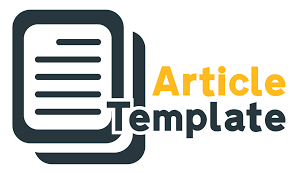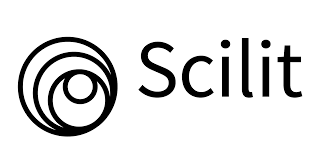PENGEMBANGAN PARIWISATA NATUNA MENUJU UNESCO GLOBAL GEOPARK
DOI:
https://doi.org/10.38043/jids.v6i1.3388Keywords:
UNESCO, Global Geopark, Pariwisata, NatunaAbstract
The UNESCO Global Geopark is a single or combined geographical area, which has geological heritage site and valuable landscapes, related to aspects of geological heritage/diversity, biological diversity, and cultural diversity, and managed for the purpose of conservation, education, and sustainable community economic development with the active involvement of the community and local government, so that it can be used to foster public understanding and concern for earth. Natuna Geopark was designated as a National Geopark on November 30, 2018 by the Indonesian National Geopark Committee. Why Natuna Geopark is very strategic to be developed as one of UNESCO Global Geopark? What will be the efforts to be carried out as a candidate for the UNESCO Global Geopark? This article explains direction for Natuna Geopark development towards one of the UNESCO Global Geopark in the future. Qualitative method is used with the field observation as part of data triangulation, including the use of primary data in interview as well as secondary data. Geological heritage, biodiversity and cultural diversity are the main pillars of UNESCO Global Geopark’s concept. Natuna National Geopark is one of Indonesian National Geoparks that will be proposed to UNESCO to be one of its UNESCO Global Geoparks in 2022. The research shows that Geopark Natuna as one of the UNESCO Global Geopark will be more effective in order to optimize the use, development and conservation of the landscape, education, and local community empowerment in order to have better local prosperity.
Downloads
References
Aaker, D. (2016). Brand Equity vs. Brand Value. https://www.prophet.com/thinking/2016/09/brand-equity-vs-brand-value/.
Almeyda-Ibáñez, M., & George, B. P. (2018). The evolution of destination branding: A review of branding literature in tourism The evolution of destination branding: A review of branding literature in tourism. Journal of Tourism, Heritage & Services Marketing, 87884(1), 9–17. https://nbn-resolving.org/urn:nbn:de:0168-ssoar-67084-7
Brilha, J., Gray, M., Pereira, D. I., & Pereira, P. (2018). Geodiversity: An integrative review as a contribution to the sustainable management of the whole of nature. Environmental Science and Policy, 86(May), 19–28. https://doi.org/10.1016/j.envsci.2018.05.001
Bunga, H. & A. (eds). (2019). Kampung Segeram; Natuna dan Sejarah yang Terlupakan. https://nasional.tempo.co/read/1253396/kampung-segeram-natuna-dan-sejarah-yang-terlupakan
Catana, M. M., & Brilha, J. B. (2020a). The Role of UNESCO Global Geoparks in Promoting Geosciences Education for Sustainability. Geoheritage, 12(1), 1. https://doi.org/10.1007/s12371-020-00440-z
Catana, M. M., & Brilha, J. B. (2020b). The Role of UNESCO Global Geoparks in Promoting Geosciences Education for Sustainability. Geoheritage, 12(1). https://doi.org/10.1007/S12371-020-00440-Z
Cresswell, J. W. (2008). Educational Research?: Planning, Conducting and Evaluating Quantitative and Qualitative Research (3rd Editio). Pearson Merril Prentice-Hall.
Dowling, R. (2017). Geoparks - A vehicle for fostering community based, sustainable, regional development in Northern Australia. www.aph.gov.au/DocumentStore.ashx?id=1bc20fbd-62b6-4a34-a9af-b5180046a5f0&subId=515536
Farsani, N.T., et al. (2011). Geotourism and geoparks as novel strategies for socio-economic development in rural areas. INTERNATIONAL JOURNAL OF TOURISM RESEARCH, 13, 68–81.
Farsani, N. T., Coelho, C., & Costa, C. (2011). Geotourism and geoparks as novel strategies for socio-economic development in rural areas. International Journal of Tourism Research, 13(1), 68–81. https://doi.org/10.1002/JTR.800
Franchino., Liechti, P. (1983). Geological notes on the stratigraphy of the island of Natuna. Memorie Di Scienze Geologiche, 36, 171–193.
Gabor, M. (2015). A Content Analysis of Rural Tourism Research. Journal of Tourism, Heritage & Services Marketing, 1(1), 25–29. https://doi.org/doi.org/10.5281/zenodo.376327
George., M. A.-I. & B. P. (2017). The Evolution of Destination Branding?: A Review of Branding Literature in Tourism. Journal of Tourism, Heritage and Services Marketing, 3(1), 9–17. https://doi.org/http://doi.org/10.5281/zenodo.401370
Gill, J. C. (2017). Geology and the Sustainable Development Goals. Episodes, 40(1), 70–76. https://doi.org/10.18814/epiiugs/2017/v40i1/017010
Gray, M. (2019). Geodiversity, geoheritage and geoconservation for society. International Journal of Geoheritage and Parks, 7(4), 226–236. https://doi.org/10.1016/J.IJGEOP.2019.11.001
Han, J., Wu, F., Tian, M., & Li, W. (2018). From Geopark to Sustainable Development: Heritage Conservation and Geotourism Promotion in the Huangshan UNESCO Global Geopark (China). Geoheritage, 10(1), 79–91. https://doi.org/10.1007/S12371-017-0227-2
Henriques, M. H., & Brilha, J. (2017a). UNESCO Global Geoparks: A strategy towards global understanding and sustainability. Episodes, 40(4), 349–355. https://doi.org/10.18814/epiiugs/2017/v40i4/017036
Henriques, M. H., & Brilha, J. (2017b). UNESCO Global Geoparks: A strategy towards global understanding and sustainability. Episodes, 40(4), 349–355. https://doi.org/10.18814/EPIIUGS/2017/V40I4/017036
Hernández, M.R., Talavera, A.S. & Parra López, A. (2016). Effects of Co-creation in a Tourism Destination Brand Image through Twitter. Journal of Tourism, Heritage & Services Marketing, 2(2), 3–10. https://doi.org/http://doi.org/10.5281/zenodo.376341
Hutabarat, L. (2018). DIPLOMASI EKONOMI INDONESIA DAN PASAR PROSPEKTIF DI KAWASAN PACIFIC ALLIANCE: STUDI KASUS MEKSIKO DAN CHILE. Jurnal Asia Pacific Studies, 2(2). https://doi.org/10.33541/japs.v2i2.806
Hutabarat, L. F. (2005). Analisis Kebijakan Luar Negeri dalam Studi Hubungan Internasional. Sociae Polites, 5(22), 13–22. http://repository.uki.ac.id/6443/
Jacobsen, J. K. S., & Munar, A. M. (2012). Tourist Information Search and Destination Choice in a Digital Age. Tourism Management Perspectives, 1(0), 39–47. https://doi.org/doi:http://dx.doi.org/10.1016/j.tmp.2011.12.005
Jones, C. (2008). History of Geoparks. Geological Society Special Publication, 300, 273–277. https://doi.org/10.1144/SP300.21
Juwana, H. (2016). Juwana, H. (2016). Kehadiran secara Nyata. Senin, 10 Oktober. https://mediaindonesia.com/opini/71119/natuna-kehadiran-secara-nyata
Katili, J. A. (1981). Geology of Southeast Asia with particular reference to the South China Sea. In The South China Sea (pp. 1077–1091). Elsevier.
Kemenparekraf. (2020). Rencana Strategis (Renstra) Kementerian Pariwisata dan Ekonomi Kreatif 2020-2024.
Kementerian Badan Perencanaan Pembangunan Nasional. (2019). Rencana Pembangunan Jangka Menengah Nasional 2020-2024. Rencana Pembangunan Jangka Menengah Nasional 2020-2024, 313.
Kemlu. (n.d.). Geopark Nasional Natuna.
Kemlu. (2021). Laporan Akhir Keragaman Budaya Geopark Nasional Natuna.
McKeever, P. (2018). UNESCO Global Geoparks and Agenda 2030. Proceedings of the 8th International Conference on UGGps: Geoparks and Sustainable Development. Adamello Brenta UNESCO Global Geopark, Madonna Di Campiglio, 22.
Metcalfe, I. (2013). Tectonic evolution of the Malay Peninsula. Journal of Asian Earth Sciences, 76, 195–213. https://doi.org/10.1016/j.jseaes.2012.12.011
Munar, A. M., & Jacobsen, J. K. S. (2014). Motivations for Sharing Tourism Experiences through Social Media. Tourism Management, 43(0), 46–54. https://doi.org/http://dx.doi.org/10.1016/j.tourman.2014.01.012
Natuna, P. (n.d.). Natuna Selayang Pandang Kabupaten Natuna, Provinsi Kepulauan Riau. Retrieved February 16, 2022, from https://natunakab.go.id/selayang-pandang-kabupaten-natuna-provinsi-kepulauan-riau/
Nella, A. & Christou, A. (2016). Extending Tourism Marketing?: Implications for Targeting the Senior Tourists’ Segment. Journal of Tourism, Heritage & Services Marketing, 2(2), 36–42. https://doi.org/http://doi.org/10.5281/zenodo.376336
Newsome, D., Dowling, R., & Leung, Y. F. (2012). The nature and management of geotourism: A case study of two established iconic geotourism destinations. Tourism Management Perspectives, 2–3, 19–27. https://doi.org/10.1016/j.tmp.2011.12.009
Polycarpus, R. (2016). Presiden?: Perbanyak Maskapai ke Natuna. https://mediaindonesia.com/politik-dan-hukum/70742/presiden-perbanyak-maskapai-ke-natuna.html
Prijanto, D., Agency, G., Setiawan, V. E., Arifin, A. S., Kusworo, A., & Permana, A. K. (2019). Geological History of Natuna Island?: Geodiversity, Geoheritage, and Sustainable Development Based on Geodiversity Inventory and Geoheritage Assessment. Proceeding, Joint Convention Yogyakarta 2019, February.
Silva, E., Warde, A., & Wright, D. (2009). Using mixed methods for analysing culture: The cultural capital and social exclusion project. Cultural Sociology, 3(2), 299–316. https://doi.org/10.1177/1749975509105536
Sudaryono. (2021). Metodologi Penelitian?: Kuantitatif, Kualitatif, dan Mix Method. Edisi Kedua. Rajawali Pers.
Sugiyono. (2006). Metode Penelitian Kuantitatif dan Penelitian & Pengembangan. Alfabeta.
Suhardi, H. & W. S. (2017). Baju dan Pakaian Melayu. https://natunakab.go.id/baju-dan-pakaian-melayu/
Swastiwi, A. (2020). Natuna (Tetap) Milik Kita. 15 Januari. https://mediaindonesia.com/opini/283408/natuna-tetap-milik-kita
Tashakkori, A. , & Teddlie, C. (2010). Handbook of mixed methods in social and behavioral research (3rd Editio). SAGE.
Tashakkori, A., & Teddlie, C. (2021). Sage handbook of mixed methods in social & behavioral research. SAGE publications.
Teddlie, C. , & Tashakkori, A. (2009). Foundations of mixed methods research. Integrating quantitative and qualitative approaches in the social and behavioral sciences. SAGE.
Torabi Farsani, N., Coelho, C., & Costa, C. (2012). Geotourism and geoparks as gateways to socio-cultural sustainability in Qeshm rural areas, Iran. Asia Pacific Journal of Tourism Research, 17(1), 30–48.
UN. (2015). Transforming our world: the 2030 agenda for sustainable development. Resolution 70/1adopted by the General Assembly on 25 September 2015.
Undang-Undang Nomor 33 Tahun 2008 tentang Pembentukan Kabupaten Kepulauan Anambas di Provinsi Kepulauan Riau. (n.d.). Retrieved February 16, 2022, from https://www.regulasip.id/book/1265/read#:~:text=PROVINSI KEPULAUAN RIAU-,UNDANG-UNDANG REPUBLIK INDONESIA NOMOR 33 TAHUN 2008 TENTANG PEMBENTUKAN,ANAMBAS DI PROVINSI KEPULAUAN RIAU&text=Undang Dasar Negara Republik Indonesia Tahun 1945%3B&text=KEPULAUAN A
UNESCO. (2016). Records of the General Conference, 38th Session, Volume 1.
UNESCO. (2017). UNESCO Global Geoparks contributing to the Sustainable Development Goals: celebrating Earth heritage, sustaining local communities. 6. https://unesdoc.unesco.org/ark:/48223/pf0000247741
Valeri, M. (2016). Networking and Cooperation Practices in the Italian Tourism Business. Journal of Tourism, Heritage & Services Marketing, 2(1), 30–35. https://doi.org/http://doi.org/10.5281/zenodo.376333
VOI. (n.d.). Mengulik Sejarah Laut Natuna sebagai Teritori Sebuah Negeri. https://voi.id/memori/1638/mengulik-sejarah-laut-natuna-sebagai-teritori-sebuah-negeri
Wisata Bawah Air Natuna. (n.d.). Media Indonesia (Administrator). https://mediaindonesia.com/galleries/detail_galleries/20510-wisata-bawah-air-di-pulau-natuna
Xiang, Z., & Gretzel, U. (2010). Role of Social Media in Online Travel Information Search. Tourism Management, 31(2), 179–188. https://doi.org/http://dx.doi.org/10.1016/j.tourman.2009.02.016
Downloads
Published
How to Cite
Issue
Section
License

This work is licensed under a Creative Commons Attribution-ShareAlike 4.0 International License.


















